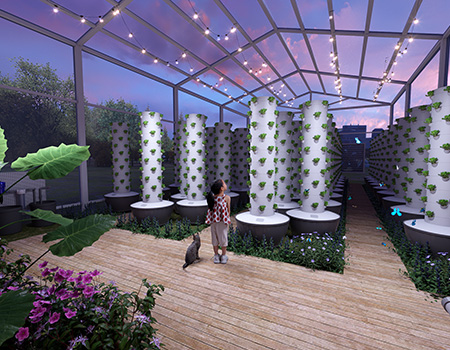Hydroponics is a new type of soilless cultivation method, also known as nutrient solution culture. Its core is to directly immerse the roots of plants in nutrient solution, replacing soil with nutrient solution, providing balanced nutrition for plants and enabling them to grow normally. Compared to traditional soil planting, the advantage of soilless cultivation lies in using water and nutrient solutions to achieve crop growth without soil.
At present, hydroponic planting technology has been widely applied and developed in various countries around the world. In China, hydroponic culture technologyalso has a long history and rich experience, mainly applied in vegetables, flowers, medicinal plants, forage, and other fields.

Application of hydroponic culture technology in vegetable cultivation
Vegetables are essential foods in our daily lives, playing an important role in ensuring people's nutritional health and improving their quality of life. However, due to the shortage of soil and water resources and environmental pollution issues, traditional soil cultivation methods are increasingly difficult to meet people's pursuit of high-quality vegetables. Hydroponics, as a new type of vegetable cultivation method, has received increasing attention.
Hydroponics tower system is often used in plant factories to grow large quantities of leafy vegetables, such as lettuce, spinach, oilseeds, and so on. The growth rate of hydroponic vegetables is generally faster than traditional soil planting. This is because the light, nutrition, and moisture of hydroponic cultivation are all under automated control. Generally speaking, most hydroponic green leafy vegetables can be harvested 11-13 times a year under suitable greenhouse conditions.

The Application of Hydroponics Technology in Flower Culture
Hydroponic cultivation of flowers is clean, hygienic, easy to maintain, and highly ornamental. Especially suitable for indoor planting and deeply loved by consumers. For example, foliage flowers refer to the flowers whose main ornamental value is the shape, color, texture, etc. of the leaves, such as tortoise shell bamboo, tiger tail orchid, asparagus, Dracaena sanderiana, green apples, fruit taro, evergreen, etc. These flowers are mostly shade loving or mid terrestrial plants, and their roots are more easily adapted to aquatic environments, making them easier to hydroponic.
Application of hydroponic culture technology in herb cultivation
Herbal culture has a history of thousands of years in China, following the progress of Chinese civilization to this day. The use of hydroponic cultivation technology to cultivate herbs is a very meaningful thing, solving the problem between the rapidly increasing demand for herbs and the scarcity of wild herbs.
As a new agricultural technology, hydroponic planting technology has great utility in both crop production and sustainable agriculture. As users, we should have a comprehensive understanding and understanding of it, use it reasonably, and maximize its effectiveness.









